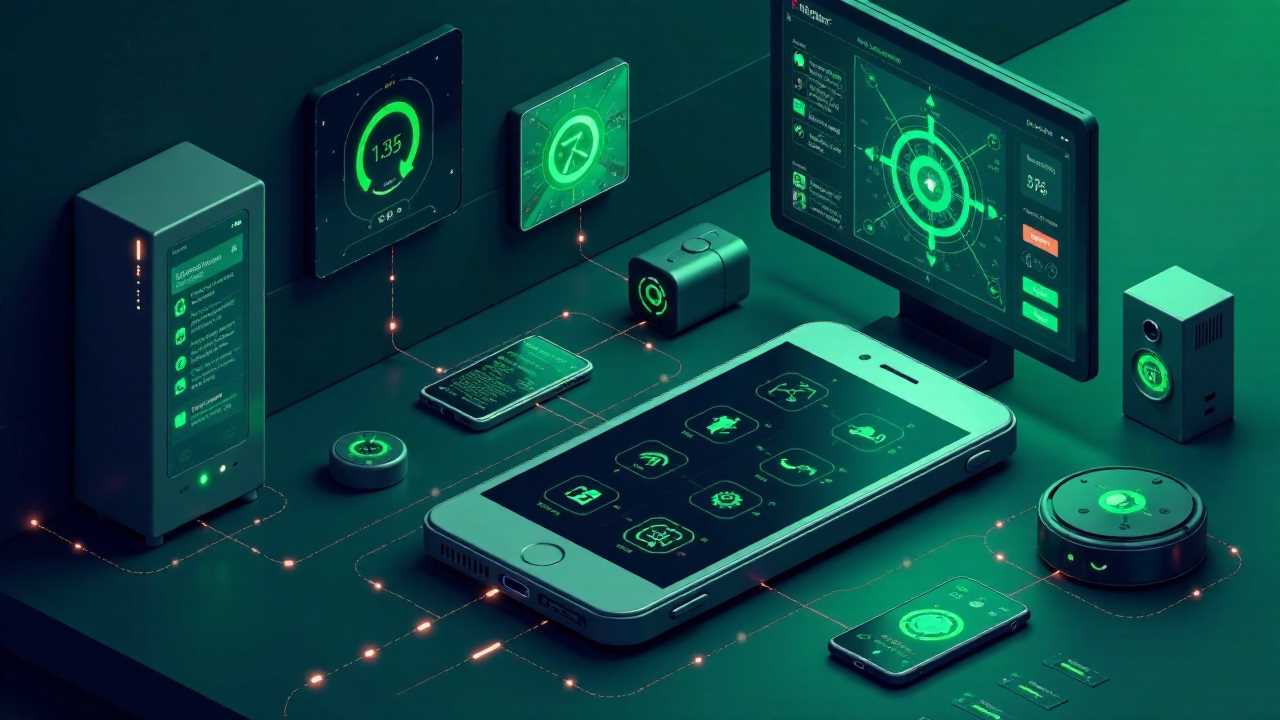
Understanding Smart Home Automation
Smart home automation represents a significant shift in how we interact with our living spaces. By integrating Internet of Things (IoT) technology, homeowners can now control various devices remotely, enhancing convenience and efficiency. This technology allows for seamless connectivity between devices, enabling them to communicate and work together harmoniously. From smart thermostats to intelligent lighting systems, the possibilities are virtually limitless.
The Role of IoT in Smart Home Automation
The IoT serves as the backbone of smart home automation. By connecting everyday devices to the internet, we can monitor and control them from anywhere in the world. For instance, smart sensors can detect when someone enters a room and automatically adjust the lighting and temperature to create a comfortable environment. This level of connectivity not only enhances user experience but also contributes to energy efficiency, as devices can be programmed to operate only when needed.
Artificial Intelligence: The Brain Behind Smart Homes
Artificial Intelligence (AI) plays a pivotal role in the evolution of smart home automation. AI algorithms analyze data collected from various sensors and devices, allowing for predictive behaviors. For example, a smart thermostat equipped with AI can learn your heating and cooling preferences over time, adjusting itself to optimize comfort while minimizing energy consumption. This intelligent adaptation is what sets smart homes apart from traditional automated systems.
Integrating Robotics into Smart Home Systems
The incorporation of robotics into smart home automation is transforming the way we manage household tasks. Robotic vacuum cleaners, lawn mowers, and even window cleaners are becoming commonplace. These devices can be programmed to operate autonomously, saving homeowners time and effort. Moreover, advancements in robotics are leading to more sophisticated machines that can navigate complex environments and perform tasks with greater efficiency.
Cloud Computing: The Backbone of Smart Home Connectivity
Cloud computing is essential for the functionality of smart home automation systems. By storing data in the cloud, users can access their smart devices from anywhere, using smartphones or tablets. This remote access is crucial for monitoring home security systems, adjusting lighting, or controlling appliances while away. Additionally, cloud computing enables the integration of multiple devices, allowing them to work together seamlessly, creating a cohesive smart home ecosystem.
Benefits of Smart Home Automation
The advantages of adopting smart home automation are numerous. One of the most significant benefits is increased energy efficiency. Smart devices can optimize energy usage, reducing utility bills while minimizing environmental impact. For instance, smart lighting systems can adjust brightness based on natural light levels, ensuring that energy is not wasted.
Another key benefit is enhanced security. Smart home security systems equipped with cameras, motion detectors, and alarms can provide real-time alerts and remote monitoring capabilities. Homeowners can feel more secure knowing they can keep an eye on their property from anywhere.
Moreover, smart home automation contributes to improved convenience. With the ability to control devices through voice commands or mobile apps, daily tasks become more manageable. Whether it's turning off lights, adjusting the thermostat, or locking doors, automation simplifies our lives.
Challenges and Considerations
While the benefits of smart home automation are compelling, there are challenges to consider. Privacy and security concerns are paramount, as connected devices can be vulnerable to hacking. Homeowners must ensure that their networks are secure and that devices are regularly updated to protect against potential threats.
Additionally, the initial investment in smart home technology can be significant. Homeowners should assess their needs and budget before diving into automation. It’s essential to choose devices that are compatible with one another to create a cohesive system.
The Future of Smart Home Automation
The future of smart home automation looks promising, with continuous advancements in technology. As IoT, AI, and robotics evolve, we can expect even more innovative solutions that enhance our living environments. The integration of smart home technology will likely become more intuitive, making it accessible to a broader audience.
Furthermore, as sustainability becomes a priority, smart home automation will play a crucial role in promoting energy-efficient practices. Homeowners will increasingly seek solutions that not only provide convenience but also contribute to a greener planet.
Smart home automation is revolutionizing the way we live, offering unparalleled convenience, efficiency, and security. By harnessing the power of IoT, AI, robotics, and cloud computing, we are entering a new era of connectivity that enhances our daily lives. As technology continues to advance, the potential for smart home automation will only grow, making our homes smarter, safer, and more sustainable. Embracing this technology today will prepare us for a connected future where our homes work for us, not the other way around.
 Business & FinanceHealth & MedicineTechnologyLifestyle & CultureScience & EnvironmentWorld NewsPrivacy PolicyTerms And Conditions
Business & FinanceHealth & MedicineTechnologyLifestyle & CultureScience & EnvironmentWorld NewsPrivacy PolicyTerms And Conditions
